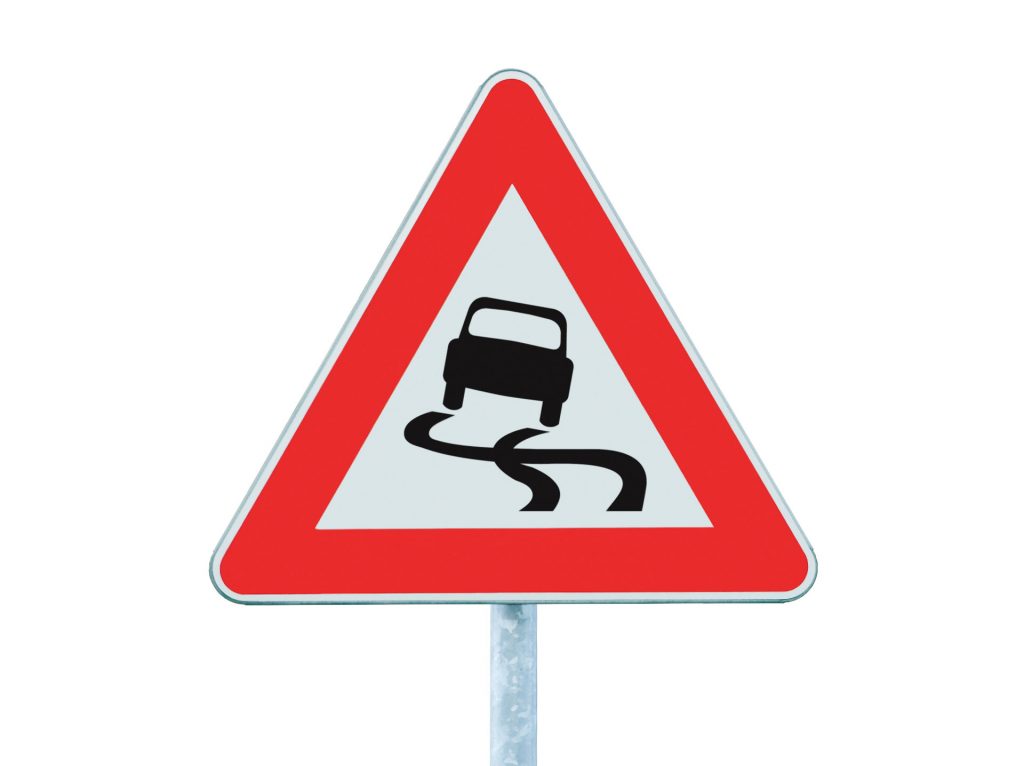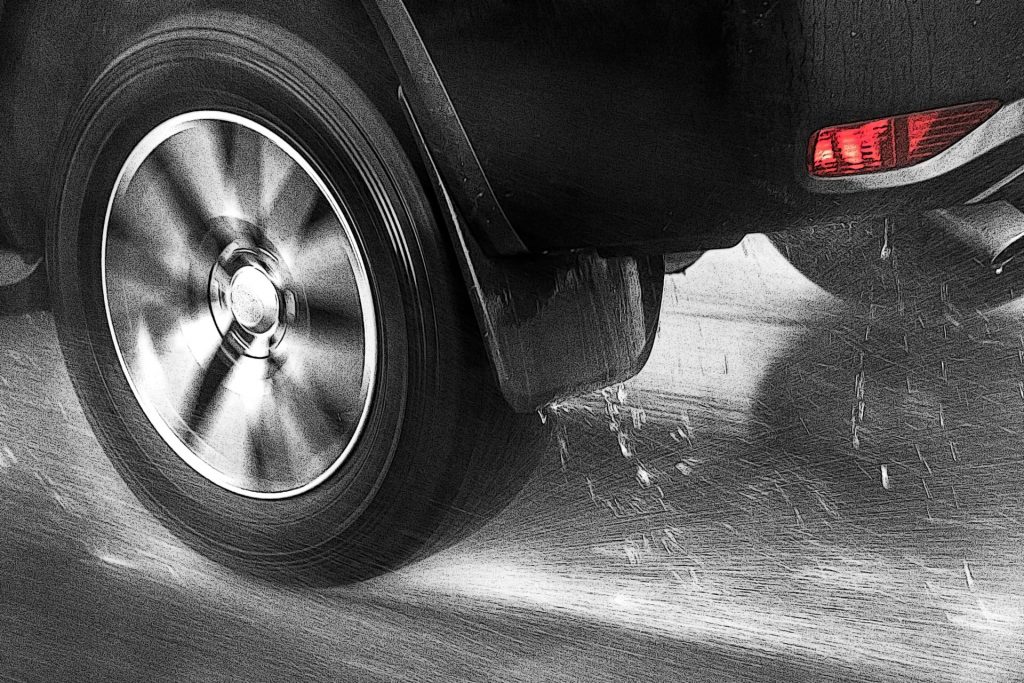Why Skids Occur
Skidding can be one of the most frightening aspects of operating a vehicle on the road. Being inside a vehicle as it slides out of control can cause many drivers to panic, especially when they fail to understand why the skid occurred. Knowing the causes of skids can help drivers understand the risks and to take evasive action early so that they can avoid potentially dangerous situations.
As the Driver’s Handbook for the Ministry of Transportation of Ontario states, skids occur when one or more of a vehicle’s tires lose their grip on the surface of the road. Under normal circumstances, contact between the tires produces traction, which essentially refers to the ability of the tire to grip the ground. If traction is good, the vehicle will be relatively stable, but if traction is compromised in some way, the vehicle is more likely to skid.
Friction and Road Grip
Ulrik Andersson explains in his Onspot article about traction, friction and road grip that several factors are typically critical for grip. A change in one or more of them can affect how well a vehicle stays on the road and how easily it can skid. The first factor is the type of materials in both the wheels and the road surface. High quality tires tend to have much better grip on the road than ones made with lower quality materials, as long as they are in reasonably good condition.

Worn out tires tend to lose their grip on the road because the treads are designed to wrap around small imperfections on the surface. When these treads are worn down, they can no longer grip in the same way, and the tires can slide around on the surface of the road. Vehicle owners should be careful to check the grip on their tires regularly to ensure that they are still in good condition and functioning properly. If the treads have worn down or even if the tires have many nicks and gashes, they may not grip the road properly.
Air pressure in the tires is also important for keeping a vehicle from skidding. According to the Tire and Rubber Association of Canada’s website, tire pressure is one of four essential elements for keeping vehicles working safely and efficiently. An excessively high tire pressure can cause a blowout, but low pressure can also cause the tires to lose their maneuverability and control. Tires are designed for a specific pressure level, and a higher or lower level can change the shape of the tire enough to cause a skid.
Similarly, road surface materials can make a difference. In good weather, asphalt is normally the most stable and best surface for avoiding skids. Dirt or gravel roads, in contrast, tend to cause vehicles to slide much more easily. However, even asphalt roads can become slippery and cause skids when the weather is less than ideal. In winter, the thin layer of ice called black ice can deceive drivers into thinking that the road is clear when it might be very slippery.

The second factor in road grip is the texture of the materials. It might seem logical that a smooth surface would give better grip, but a rougher texture is generally better, within limits. While a bumpy road will not give good traction, the treads of a good tire, in contact with the road, wrap themselves around the tiny imperfections in the surface and provide added grip.
The third factor in road grip is the strength of the force pushing the two surfaces together. A heavy vehicle has more force than a lighter one and will theoretically have more grip on the road. Sometimes, however, other factors can counteract this influence. A tall vehicle with a very high centre of gravity, for example, might tend to skid despite its weight.
The final factor influencing traction is any material that comes between the tires and the surface of the road, such as water, ice, leaves, or various other types of debris on the road. Most drivers in Canada learn of the dangers of ice, but they may not consider how slippery wet leaves can be. Oil that drips down from passing vehicles can also cause the surface to become slick, especially in rainy conditions.
Common Causes of Skidding
Any or all of these factors can become causes of skidding, but normally something has to initiate the skid. If a vehicle is moving straight along a road at a reasonable pace for the conditions, a skid is highly unlikely to happen. However, several driving habits can cause a vehicle to skid, as the Transforce website notes. The most common driver-induced causes of skids are over-steering, over-braking, over-accelerating or driving too quickly.
Inexperienced drivers might be especially prone to over-steering, but this problem can happen to anyone. Sometimes, drivers swing too wide around a corner or jerk the steering wheel far to one side to correct a small mistake, sometimes causing the vehicle to slide out of control. Often, over-steering is combined with excess speed for the maneuver, and drivers should be aware of the ideal combination of speed and steering for each situation. For example, a sharp corner at a city intersection will require a slower speed and more steering than a gradual curve of a highway would.
Over-braking is another common cause of skids. Sometimes, drivers may be forced into braking quickly because of an unexpected situation, such as a large animal or person suddenly running across the road. In that case, the driver may have no choice except to brake quickly and sharply, even if the move results in a skid. However, drivers should normally look far ahead enough on the road to be able to slow down and stop without skidding much, if at all.
A third cause of skidding is over-accelerating. This type of skid happens most often when a driver has stopped at a red light or stop sign and is starting up again. If the driver tries to move quickly in front of other traffic or presses the accelerator too firmly for the road conditions, the vehicle may skid slightly before becoming stable again and continuing along the road.
A common form of skid, especially with over-acceleration, is commonly known as “fishtailing.” This term refers to a situation in which the back end of the vehicle swings back and forth like the flapping tail of a fish. This type of skid often happens when drivers try to start up too quickly on the road or when a vehicle turns a corner and the back end swings out.
As the UpVehicle website notes, getting out of this type of skid is normally quite easy if drivers remember to steer in the direction of the skid. Hard braking is not a good idea, as this will send the energy propelling the vehicle to its rear end and potentially cause a complete spin. As with all other skids, remaining calm is essential.
The fourth cause of skidding listed on the Transforce website is excessive speed, or driving too quickly. According to the Ontario Road Safety Annual Report from the Ministry of Transportation for 2017, deaths from speeding or street racing increased by 18 percent between 2016 and 2017, and it is likely that many of these fatalities involved skidding.
At low speeds, such as when vehicles start up after being stopped at a red light, skidding can be a minor problem, often requiring only a small steering adjustment to correct. At high speeds, however, skidding can cause vehicles to slide into other vehicles, crash into barriers or go off the road. Drivers and passengers can be badly injured or killed, while other road users can also be endangered.
Preventing Skids
The best way to prevent skids is to drive for the conditions on the road, whether those are weather conditions, the amount of traffic or anything else that could affect the safety of road users in the immediate area or ahead on the road. Drivers should also know how their own vehicles respond to various situations. For example, a sports car will respond more quickly to the accelerator or brake pedal than a truck or minivan will, but that quick response time also comes with a greater chance of skidding. A newer vehicle or a new set of tires will also have better traction than an older vehicle with worn-out tires would have, and drivers need to be aware of the increased possibility of skidding in an older vehicle.
Day-to-day changes in the weather are also important for drivers to consider, and sometimes even moment-by-moment factors can affect the stability of a vehicle on the road. For example, a small amount of rain, combined with dry earth falling off of the back of a vehicle, could create a slippery surface of mud that could cause any vehicles following behind on the road to begin to skid. Traction depends on the contact between tires and the pavement. When that contact is lost, even for a moment, drivers can lose control of their vehicles and begin to skid.
Avoiding a skid on the road can be difficult, especially when road conditions are less than ideal. Still, when drivers know the causes of most skids, they can take precautions to try to keep their wheels in contact with the road surface. With care and practice, drivers can learn to gain extra control over their vehicles.
